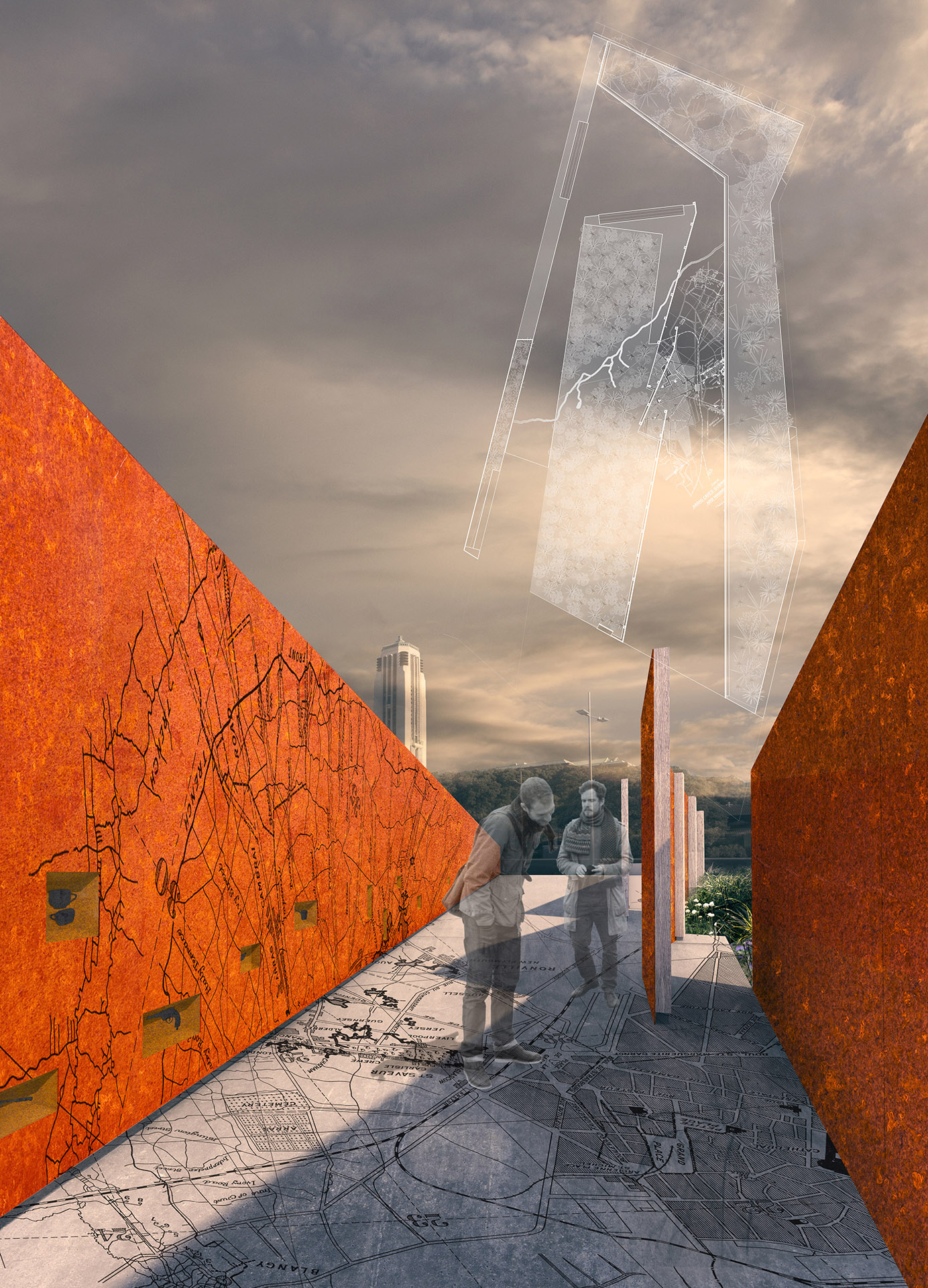





Les Fleurs Sauvages
Pukeahu French War Memorial Competition – Finalist
Amanda Bulman, Nicholas Zilliox, Nick Denton, Richard Ainsworth, Jake Yocum, Hamish Moorhead
We were delighted to take part in the French Memorial competition. Our proposal was one of 4 shortlisted out of 44 entries in which our bold, challenging approach was highly commended.
Les Fleurs Sauvages sits on a terraced slope with a western aspect, in front of the Carillon, between Pukeahu Mt Cook and central Wellington. The North-South orientation of the main trench wall forms a marker enclosing the site from the eastern walkway, presenting itself as a raised red ribbon. A red trench cuts into the ground, surrounded by a delicate cloak of plantings. Fragile yet persistent flowers speak of the enduring bond formed from New Zealand-French interactions: the positive outcome of a desperately bleak and horrific war.
The memorial commemorates the soldiers who came from such distant places to help other nations defend a free way of life. The memorial engages with the visitor inviting reflection and contemplation, about the place of war. The trenches were the spaces inhabited by the soldiers during this time. It is appropriate to show this space in a memorial to understand the bond between our two countries.
As the visitor enters the memorial, the space narrows, the trench wall becomes ever more dominant and the markings and inlays place the site firmly in France. The path down into the trench invites contemplation of the descent into war. The interior of the trench is rich with mapping cut into the concrete floor and corten walls. The trench surrounds the visitor, and the city beyond disappears from view. The experience is sensual, rather than intellectual, relying on perception and memory.
A group of bouleau (birch) trees hover above, disturbing the horizon as they stand as sentries, together – narrow and upright. Like soldiers, they gain strength in numbers, each one relying upon those beside them. A map of the French town of Arras is cut into the walls and floor of the trench, with filigree lines of battle sites, underground tunnels and the town on its surface. La Scarpe River exits the map and slices through the architecture, spilling over the trench into the landscape.
Placed in the wall are niches of cast bronze inlaid with lead. Traced object silhouettes common in the trenches and the town are seen on the walls. They were used in the daily routines of the soldiers’ lives. Les Fleurs Sauvages uses simple materials: concrete, steel and timber. Materials which age and weather, a process that enhances their beauty but which underlines the passing of time, physically changing the face of the monument.
Intrinsic value is added to the bronze and lead of the niches through the finely honed artefacts within. Human bonds were formed around these objects, and it is these bonds that are honoured and remembered in the way the objects are represented and treasured.






